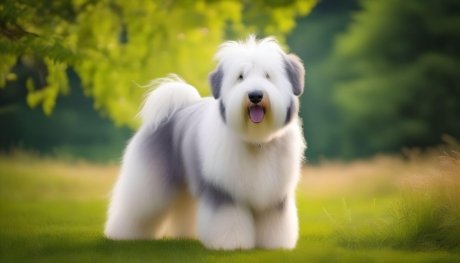Labrador Vs German Shepherd: A Comprehensive Comparison
When it comes to choosing a canine companion, there are numerous factors to consider. Two popular breeds that often capture the hearts of dog lovers are the Labrador Retriever and the German Shepherd. While both breeds are highly regarded for their intelligence, loyalty, and versatility, they possess distinct characteristics that set them apart. In this article, we will delve into the key differences and similarities between Labradors and German Shepherds to help you make an informed decision about which breed may be the best fit for you and your lifestyle.
Labrador vs German Shepherd
Key differences between Labradors and German Shepherds:
| Comparison Factors | Labrador Retriever | German Shepherd |
|---|---|---|
| Origin | Newfoundland, Canada | Germany |
| Size | Medium to large | Large |
| Coat Type | Short, dense | Double coat |
| Coat Colors | Black, yellow, chocolate | Various, commonly black and tan |
| Temperament | Friendly, outgoing | Loyal, protective |
| Trainability | Highly trainable | Highly trainable |
| Activity Level | Energetic | Highly active |
| Grooming Needs | Low maintenance | Moderate to high |
| Health Concerns | Hip and elbow dysplasia, obesity | Hip and elbow dysplasia, degenerative myelopathy |
| Suitability for Families | Excellent family dogs | Good family dogs |
| Compatibility with Other Pets | Generally good | Requires proper socialization |
| Guarding Abilities | Not typically guard dogs | Excellent guarding instincts |
| Adaptability to Climate | Good in various climates | Better suited to cooler climates |
| Popularity | Highly popular | Popular |
| Average Price Range (India) | ₹15,000 – ₹40,000 | ₹20,000 – ₹50,000 |
1. History and Origins
1.1 Labrador Retriever:

The Labrador Retriever originated in Newfoundland, Canada, where they were initially bred to assist fishermen in retrieving nets and hauling ropes. They later gained popularity as versatile hunting and companion dogs due to their exceptional retrieving abilities and friendly nature.
1.2 German Shepherd:

German Shepherds, also known as Alsatians, were developed in Germany for herding and guarding sheep. Their exceptional intelligence and trainability led to their utilization in various roles, including police and military work, search and rescue, and as guide dogs for individuals with disabilities.
2. Physical Appearance
Labradors and German Shepherds possess distinct physical characteristics that differentiate them from one another.
2.1 Labrador Retriever:
Labradors are medium to large-sized dogs with a sturdy build and a well-balanced appearance. They have a short, dense double coat, webbed feet, and a tail that serves as a rudder while swimming. Labradors come in three primary colors: black, yellow, and chocolate.
2.2 German Shepherd:
German Shepherds are large-sized dogs with a muscular body and a noble, confident posture. They have a double coat with a dense undercoat and a longer, harsher outer coat. German Shepherds commonly exhibit a black and tan coloration, although they can also be solid black or sable.
3. Temperament and Personality
3.1 Labrador Retriever:
Labradors are renowned for their friendly and outgoing nature. They are typically affectionate, gentle, and eager to please, making them excellent family pets. Labradors are known for their love of water and their fondness for retrieving objects.

3.2 German Shepherd:
German Shepherds are known for their loyalty, courage, and strong protective instincts. They are often reserved with strangers but form deep bonds with their families. German Shepherds require early socialization and consistent training to ensure they develop into well-rounded and confident individuals.
4. Trainability and Intelligence
4.1 Labrador Retriever:
Labradors are highly intelligent and trainable dogs. They have a strong desire to learn and are quick to pick up commands and new skills. Labradors excel in various activities, including obedience, agility, and search and rescue.
4.2 German Shepherd:
German Shepherds are known for their intelligence and trainability. They consistently rank among the most intelligent dog breeds. Their versatility allows them to excel in various tasks, such as police work, tracking, and competitive obedience.

5. Exercise and Activity Levels
5.1 Labrador Retriever:
Labradors are energetic dogs that require regular exercise to maintain their physical and mental well-being. They thrive in active households and enjoy activities such as long walks, swimming, and playing fetch.
5.2 German Shepherd:
German Shepherds are highly active dogs that require ample exercise and mental stimulation. They excel in activities such as obedience training, agility, and advanced problem-solving tasks. Regular exercise is crucial to prevent behavioural issues stemming from pent-up energy.
6. Grooming and Maintenance
6.1 Labrador Retriever:
Labradors have a short, dense coat that is relatively low-maintenance. Regular brushing to control shedding and occasional bathing are usually sufficient to keep their coat in good condition.

6.2 German Shepherd:
German Shepherds have a thicker coat that requires more frequent grooming. They shed seasonally and require regular brushing to manage shedding. German Shepherds are not recommended for individuals with allergies due to their higher shedding potential.
7. Health and Lifespan
7.1 Labrador Retriever:
Labradors are generally healthy dogs, but they are prone to certain health conditions, including hip and elbow dysplasia, obesity, and progressive retinal atrophy. With proper care, Labradors have an average lifespan of 10 to 12 years.
7.2 German Shepherd:
German Shepherds are susceptible to various health issues, including hip and elbow dysplasia, degenerative myelopathy, and digestive disorders. Regular veterinary care, a balanced diet, and exercise can help promote their overall health and extend their lifespan, which typically ranges from 9 to 13 years.

8. Suitability for Families
Labradors and German Shepherds can both make wonderful family pets, but there are certain factors to consider.
8.1 Labrador Retriever:
Labradors are known for their friendly and tolerant nature, making them great companions for families with children. They generally get along well with other pets and are adaptable to various living situations.
8.2 German Shepherd:
German Shepherds can be excellent family dogs when properly socialized and trained. They are protective of their families and may exhibit herding instincts towards small children. Early socialization and supervision are crucial when integrating them into a family setting.
9. Compatibility with Other Pets
9.1 Labrador Retriever:
Labradors are generally friendly towards other pets and can coexist harmoniously. Proper introductions and gradual integration are recommended to ensure a smooth transition.
9.2 German Shepherd:
German Shepherds can coexist with other pets when introduced properly and raised with them from an early age. Supervision is important, especially when introducing them to smaller animals, as their herding instincts may be triggered.
10. Guarding and Protection Abilities
10.1 Labrador Retriever:
Labradors are not typically known for their guarding or protection abilities. While they may bark to alert their owners, they are generally more inclined towards being friendly and welcoming to strangers.

10.2 German Shepherd:
German Shepherds excel in guarding and protection roles. Their natural instincts and training make them effective deterrents and protectors. They are often utilized in law enforcement and security settings.
11. Adaptability to Climate
11.1 Labrador Retriever:
Labradors have a thick double coat that provides insulation in various climates. They are well-suited to both cold and warm weather conditions, but precautions should be taken during extreme temperatures.
11.2 German Shepherd:
German Shepherds can adapt to different climates, but they are better suited to cooler environments. Their thick coat can make them prone to overheating in hot climates, requiring proper shade and access to water.
12. Common Health Issues
12.1 Labrador Retriever:
Labradors are prone to certain health conditions, including:
- Hip and elbow dysplasia
- Obesity
- Progressive retinal atrophy
- Exercise-induced collapse
12.2 German Shepherd:
Common health issues in German Shepherds include:
- Hip and elbow dysplasia
- Degenerative myelopathy
- Gastric dilatation-volvulus (bloat)
- Exocrine pancreatic insufficiency
13. Popularity and Availability
13.1 Labrador Retriever:
Labradors are consistently ranked among the most popular dog breeds worldwide. They are widely available from reputable breeders and rescue organizations.
13.2 German Shepherd:
German Shepherds are also popular and widely available. Due to their demand, it is crucial to find reputable breeders or consider adopting from rescue organizations.

14. Costs of Ownership
The costs of owning a Labrador or German Shepherd can vary depending on various factors, including breeders, location, and healthcare needs. Generally, the initial purchase price, food, grooming, veterinary care, training, and supplies should be considered when estimating the cost of ownership.
15. Making the Right Choice
Ultimately, the decision between a Labrador Retriever and a German Shepherd should be based on your lifestyle, preferences, and the specific needs of the breed. It is essential to spend time with both breeds, research reputable breeders or adoption centers, and seek guidance from experienced dog owners or professionals to make an informed choice that aligns with your expectations.
Conclusion:
Labradors and German Shepherds are exceptional breeds that bring joy, companionship, and loyalty to their owners. While Labradors excel in their friendly and versatile nature, German Shepherds offer protection and intelligence. By considering their unique characteristics and your personal requirements, you can make an educated decision that will result in a lifelong partnership with a beloved four-legged friend.
Frequently Asked Questions on Labrador Vs German Shepherd:
-
Are Labradors and German Shepherds good with children?
Labradors and German Shepherds can both be great with children, but proper socialization and supervision are crucial.
-
Do Labradors or German Shepherds require a lot of exercise?
Both breeds require regular exercise, but German Shepherds are generally more active and require more mental stimulation.
-
Are Labradors and German Shepherds prone to health issues?
Both breeds can be susceptible to certain health conditions, but regular veterinary care can help mitigate potential problems.
-
Which breed is more suitable for first-time dog owners?
Labradors are often recommended for first-time dog owners due to their friendly nature and trainability.
-
Can Labradors and German Shepherds live in apartments?
While Labradors can adapt to apartment living with sufficient exercise, German Shepherds generally thrive in larger spaces with access to outdoor areas.
-
Are Labradors or German Shepherds better for families with small children?
Both Labradors and German Shepherds can be great family dogs, but Labradors are typically known for their gentle and tolerant nature, making them a popular choice for families with small children.
-
Can Labradors and German Shepherds be left alone for long periods?
While no dog should be left alone for excessively long periods, Labradors generally handle alone time better than German Shepherds. German Shepherds are known for their strong bonds with their families and may experience separation anxiety if left alone for extended periods.
-
Which breed is better for outdoor activities like hiking or running?
Both Labradors and German Shepherds can excel in outdoor activities. Labradors have a high endurance level and are known for their love of water, while German Shepherds are agile and can handle rugged terrains.
-
Are Labradors or German Shepherds prone to excessive shedding?
Both breeds shed, but German Shepherds tend to shed more heavily, especially during seasonal coat changes. Regular grooming and brushing can help manage shedding for both breeds.
-
Do Labradors or German Shepherds have a higher tendency to bark?
German Shepherds are generally more alert and vocal, making them more prone to barking. Labradors, on the other hand, are typically less vocal and are known for their friendly demeanour.
-
How much does a Labrador Retriever cost?
The price of a Labrador Retriever can vary depending on factors such as the breeder’s reputation, the puppy’s lineage, and the region. On average, you can expect to pay between $800 to $1,500 for a Labrador Retriever from a reputable breeder.
-
What is the average price of a German Shepherd?
The cost of a German Shepherd can vary based on factors such as the breeder’s reputation, the puppy’s pedigree, and the region. On average, the price for a German Shepherd from a reputable breeder ranges from $1,000 to $2,500.
-
What is the average price of a Labrador Retriever in India?
The cost of a Labrador Retriever in India can vary depending on various factors such as the breeder’s reputation, the puppy’s lineage, and the location. On average, you can expect to pay between ₹15,000 to ₹40,000 for a Labrador Retriever in India.
-
How much does a German Shepherd typically cost in India?
The price of a German Shepherd in India can vary based on factors such as the breeder’s reputation, the puppy’s pedigree, and the location. On average, the cost of a German Shepherd from a reputable breeder in India ranges from ₹20,000 to ₹50,000.
Recommended related to Labrador Vs German Shepherd:
Great Dane Vs Irish Wolfhound (2023) | Comparision and Differences





























